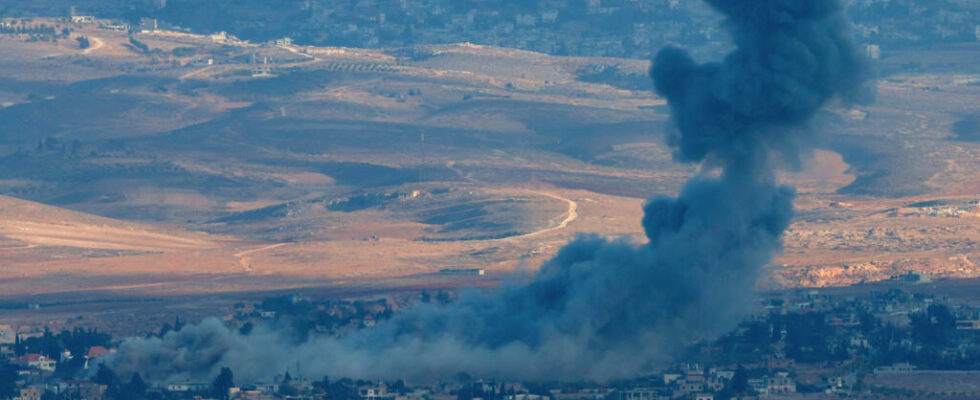Forty days after the start of the open war between Hezbollah and the Israeli army, on September 23, and more than a month after the launch of the ground offensive against Lebanon, the two belligerents still seem to be in a warlike logic until ‘at the endist. During a tour near the border with Lebanon on November 3, Israeli Prime Minister Benjamin Netanyahu threatened Hezbollah with “ firm response » and demanded its withdrawal to the north of the Litani River, 30 kilometers from the border. The Shiite party, for its part, published a video of an underground ballistic missile installation with the slogan: “ We will not give up our weapons. »
4 mins
With our correspondent in Beirut,
In the south of Lebanonafter weeks of fierce fighting on a front stretching from the Mediterranean to the foothills of the occupied Golan, over a length of 120 kilometers, the situation is still tense. Israeli troops managed to advance towards strongholds of the Hezbollah in the western, central and eastern sectors of the border, and encountered fierce resistance from Shiite fighters.
Israeli soldiers entered the outlying neighborhoods of around ten border towns, located between one and six kilometers from the blue line, drawn by the United Nations following the Israeli withdrawal from Lebanon in the year 2000. Some of these localities are emblematic, such as Maroun el-Ras, Kfarkila, Edeissy or Aïta el-Chaab. They destroyed a number of Hezbollah outposts, seized weapons and ammunition, and captured around ten fighters.
Insufficient success
These tactical successes relayed with great reinforcement of images by the Israeli army are insufficient to tip the balance of power in favor of Israel. Despite these advances, the Israeli army has failed to secure any Lebanese locality or to sustainably occupy one of the eight strategic heights along the border.
Israeli soldiers face strong resistance from Hezbollah’s first line of defense, which continues to fire dozens, sometimes hundreds, of rockets and drones every day into the Galilee and deeper into Israeli territory. All Israeli border localities, from the Mediterranean to the Golan, remain a daily target of Hezbollah’s short and medium range rockets.
Also readWar in the Middle East: Israel carried out a commando operation in northern Lebanon
The Israeli troops who entered Lebanon, as well as their rear bases, are subjected to intense shelling, which prevents them from settling permanently on the conquered ground. It is undoubtedly for this reason that the Israeli army engages in systematic dynamiting of entire neighborhoods in Lebanese localities overlooking the Galilee, before withdrawing.
On Saturday, November 2, Israeli troops withdrew from the eastern and southern neighborhoods of the strategic locality of Khiyam, in the eastern sector, without having managed to enter the center of this large town. The Israelis’ next target could be, according to informed sources, the emblematic town of Bint-Jbeil, in the central sector, five kilometers from the border. Bint-Jbeil is emblematic because in 2006, the Israeli army suffered heavy losses there without managing to occupy it.
Also readLebanon: Nabatieh, a town that became a ghost after Israeli bombings
New troops deployed
Military experts are almost unanimous on the fact that the period of uncertainty and uncertainty which followed the hard blows received by Hezbollah after the death of Hassan Nasrallah and its main military commanders from mid-September now seems outdated. The chain of command and control has been restored and coordination between the three territorial units that defend the three sectors of the border and the elite mobile al-Radwan force appears to be functioning normally.
According to our information, Hezbollah recently replaced units deployed on the front for months with fresh troops. These reinforcements were able to be sent after the establishment of a new reserve call system. It must be remembered that most of the 3,500 injured in the explosion of the pagers, September 16were reservists, who were precisely mobilized thanks to these electronic telecommunications devices.
